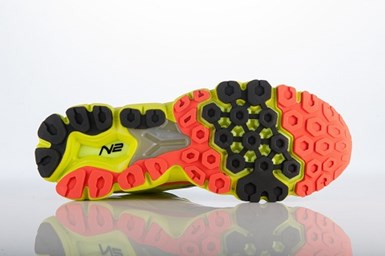Two New Alliances in Microcellular Foams
Trexel has licensed Milacron to supply turnkey MuCell systems for injection and blow molding, and joined with Lubrizol to develop a new TPU foam technology.

New Balance athletic shoes use MuCell technology.
Trexel, Inc., Wilmington, Mass., recently announced two new partnerships with Milacron and Lubrizol. One agreement allows Milacron LLC, Batavia, Ohio, to incorporate Trexel’s MuCell microcellular foam technology in its injection and blow molding equipment under the Milacron, Ferromatik, Uniloy, and Mold-Masters brands, while transferring the operating rights under Trexel’s patents to the machine buyer without any added fees or costs.
Trexel had a previous license agreement with Milacron back in 1999, allowing Milacron to provide MuCell-compatible screws and barrels on its injection machines, but the agreement had become dormant in subsequent years. This revival of the relationship allows Milacron to supply turnkey MuCell systems, including MuCell gas-dosing equipment.
Meanwhile, in partnership with Lubrizol Engineered Polymers, Wickliffe, Ohio, Trexel helped develop BounCell-X, a new high-performance TPU foam technology utilizing Lubrizol’s Estane TPUs. This plasticizer-free, low-density thermoplastic foam has a thin solid skin for durability and ability to utilize regrind or post-consumer recycle due to the absence of crosslinking agents or chemical blowing agents. BounCell-X can achieve a broad range of hardness and energy absorption for use in sports and recreation applications.
In addition, Trexel revealed that it has been working with Boston-based New Balance Athletic shoe, Inc. for more than four years, during which New Balance has used MuCell technology to provide shock absorption in running-shoe components (photo). Today, New Balance uses MuCell-molded mid-sole and heel components in over 1 million pairs of running shoes annually.
Related Content
-
A Systematic Approach to Process Development
The path to a no-baby-sitting injection molding process is paved with data and can be found by following certain steps.
-
Back to Basics on Mold Venting (Part 2: Shape, Dimensions, Details)
Here’s how to get the most out of your stationary mold vents.
-
Is There a More Accurate Means to Calculate Tonnage?
Molders have long used the projected area of the parts and runner to guesstimate how much tonnage is required to mold a part without flash, but there’s a more precise methodology.





